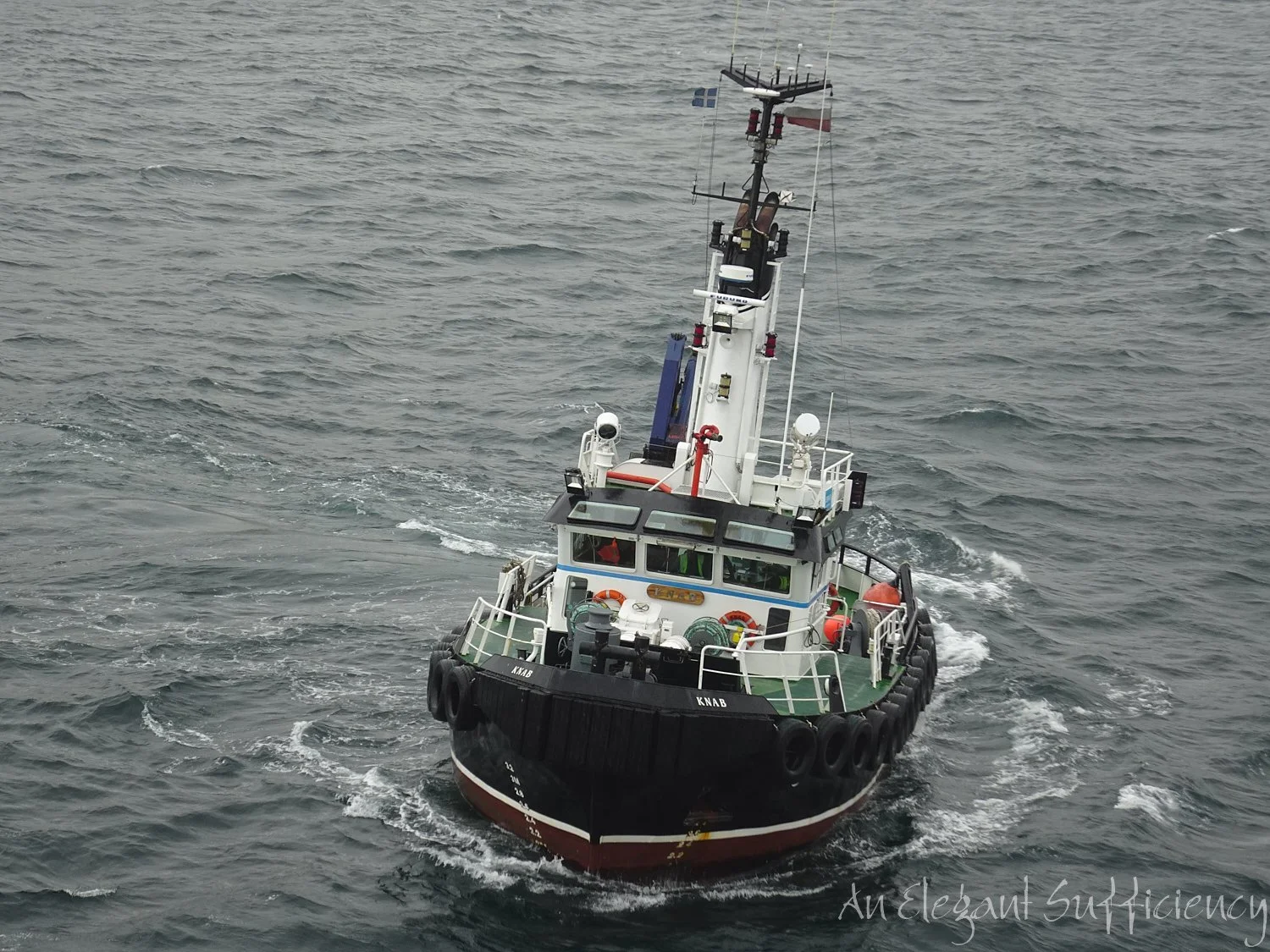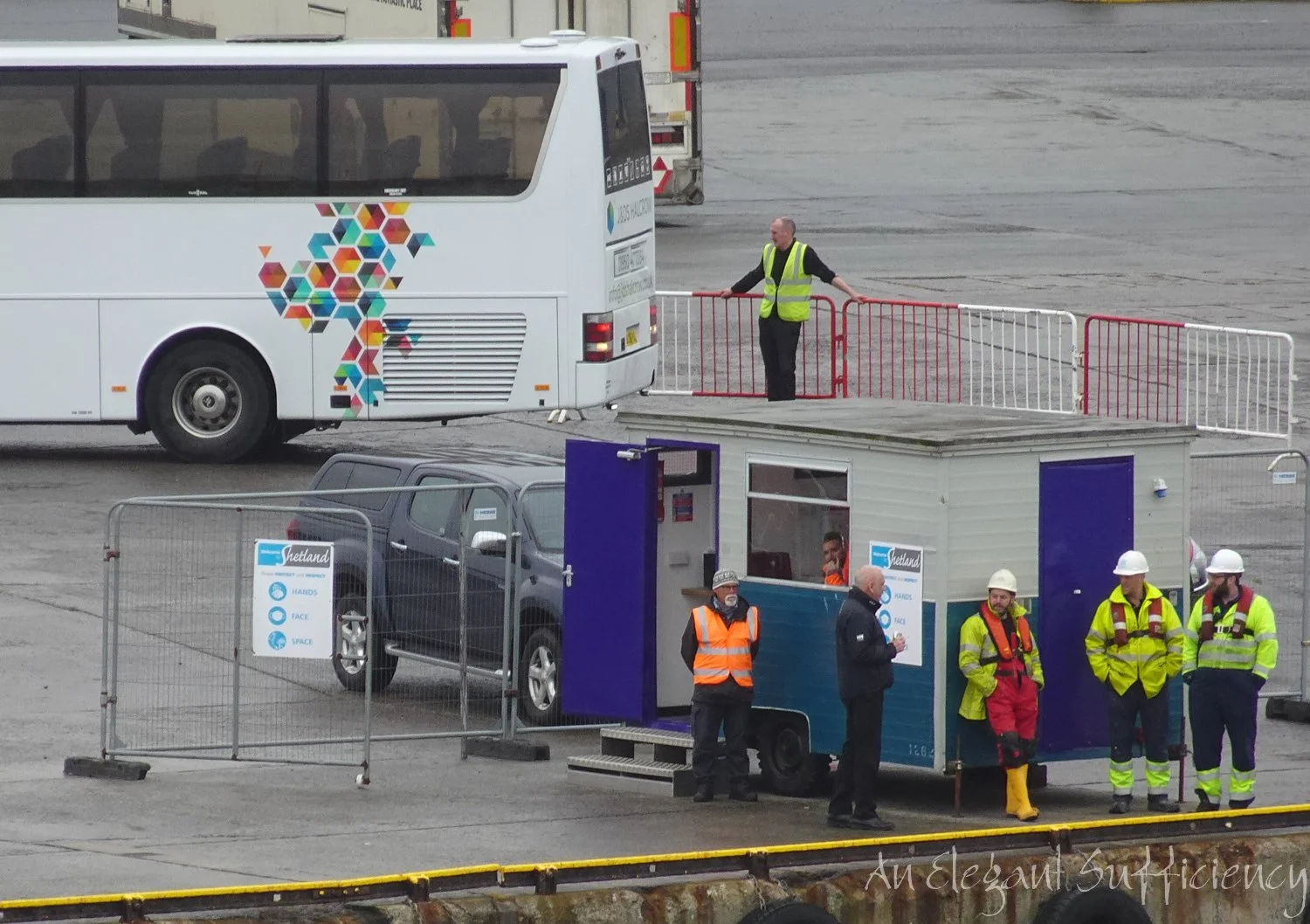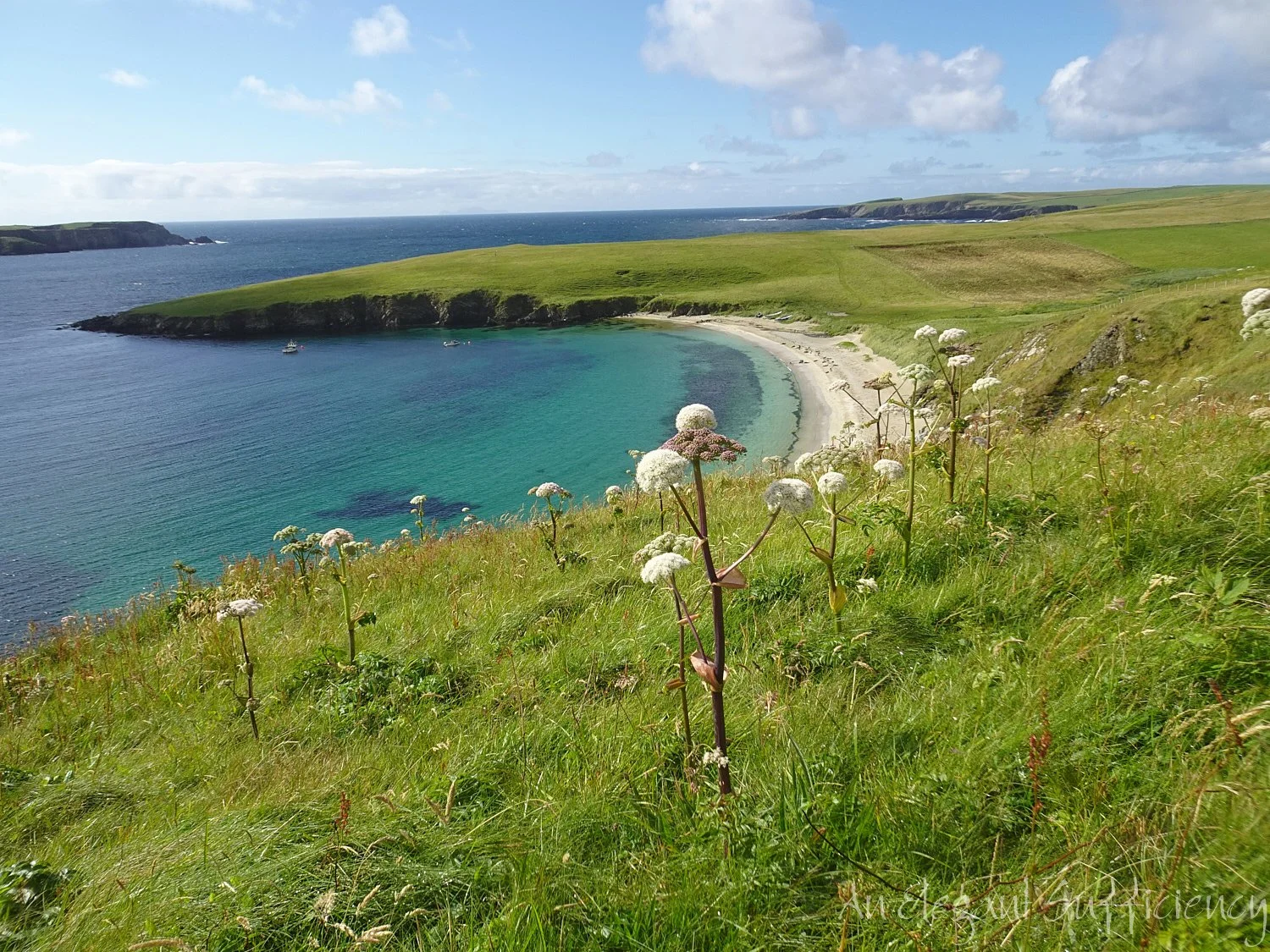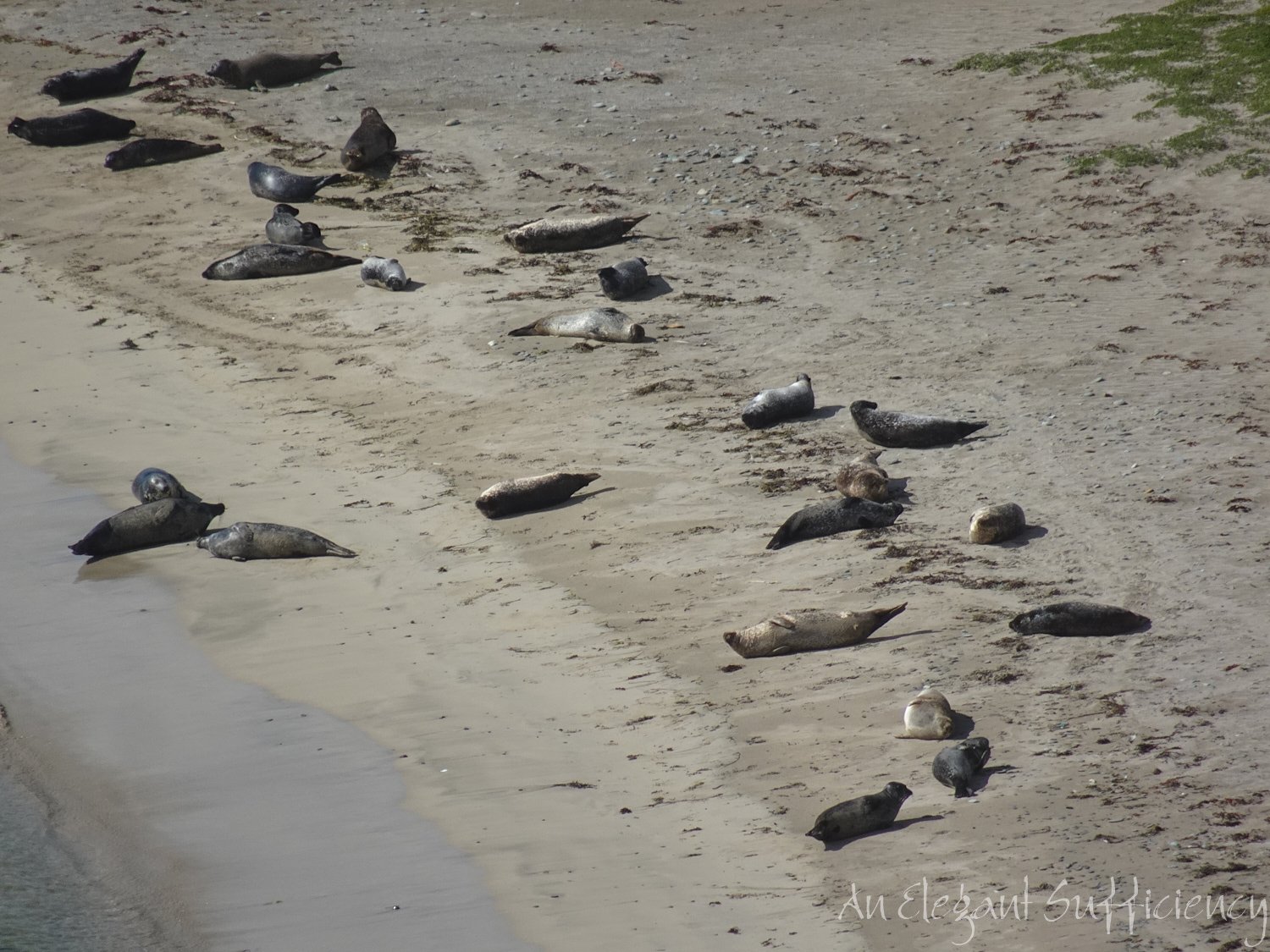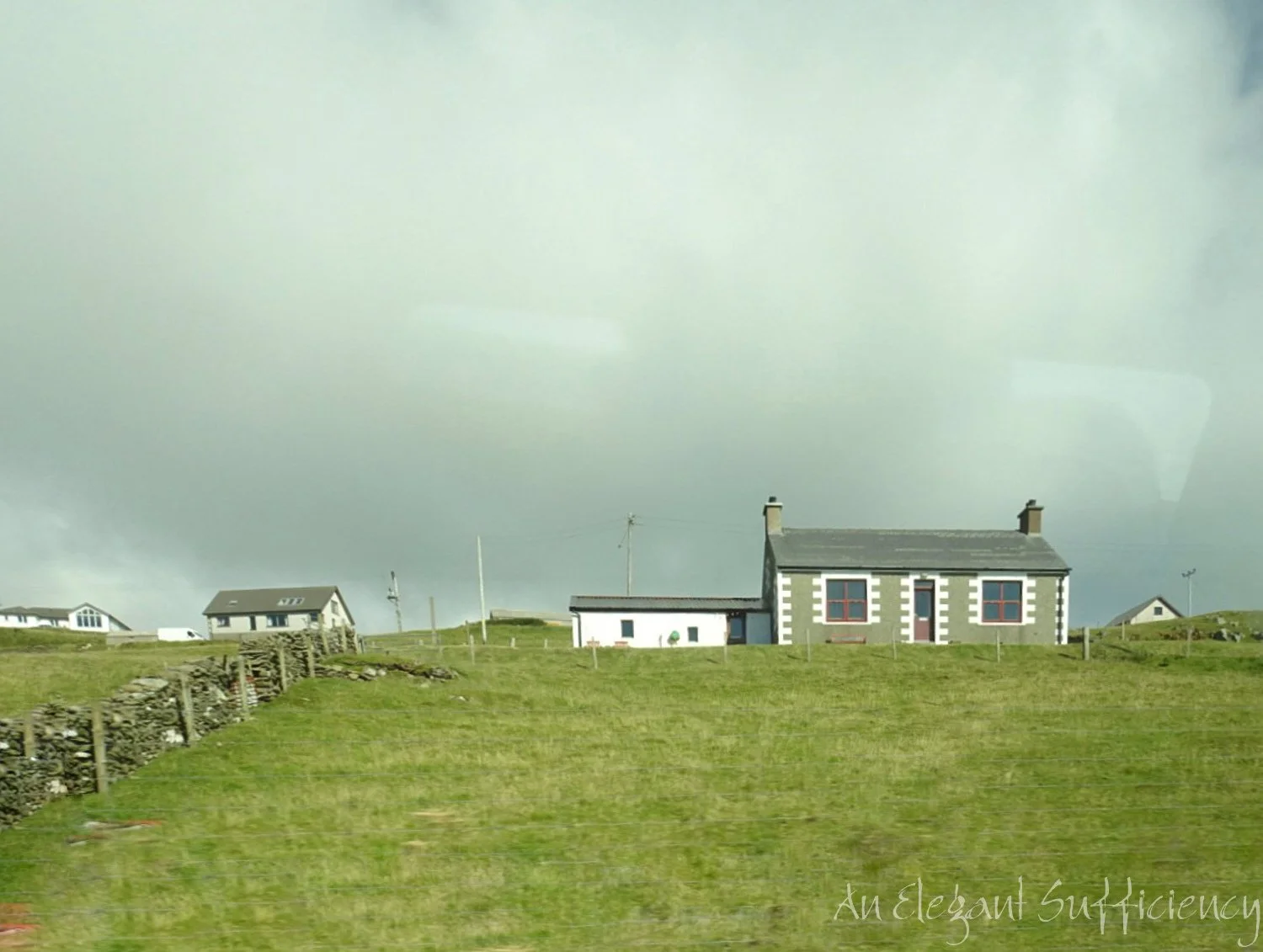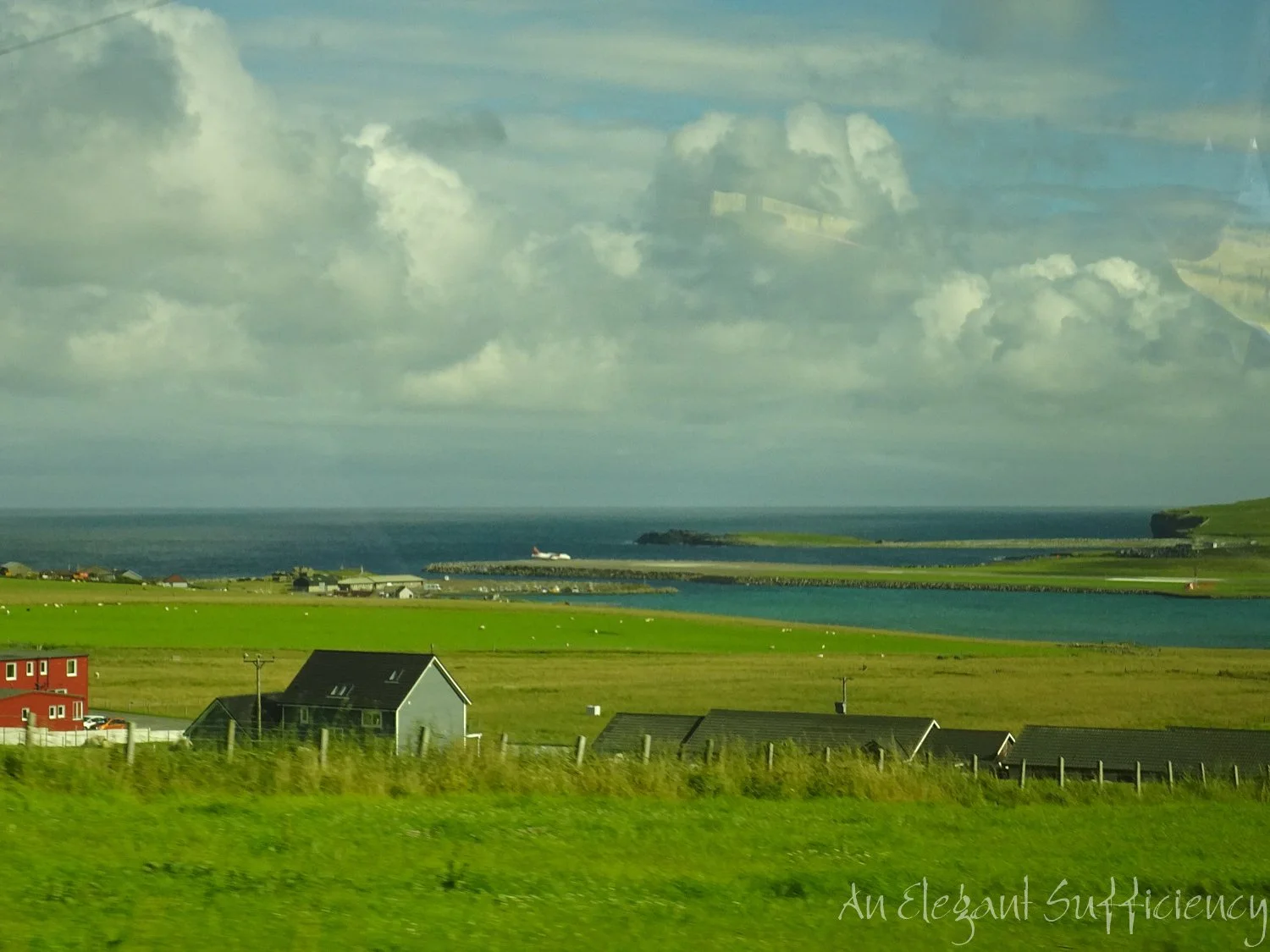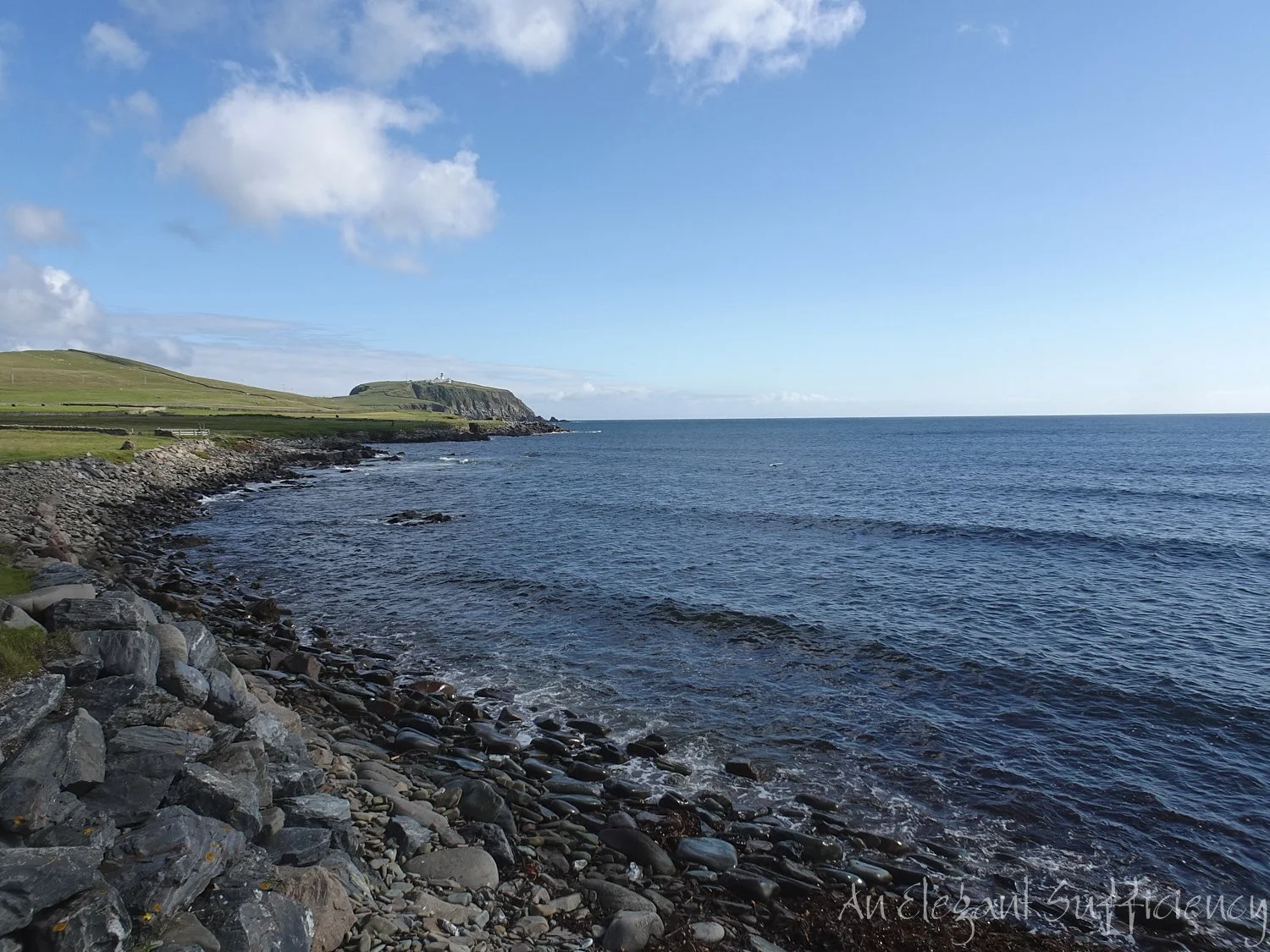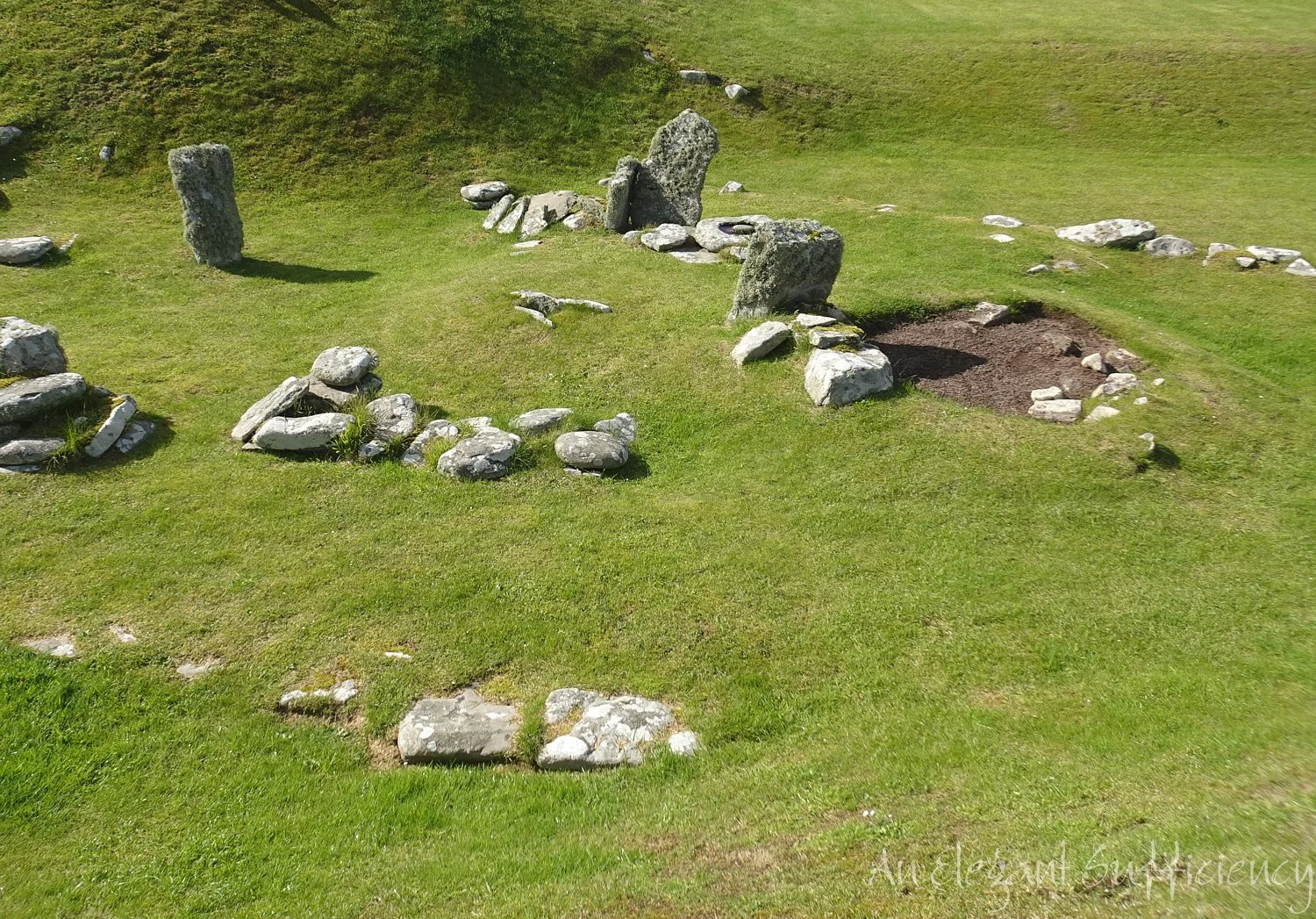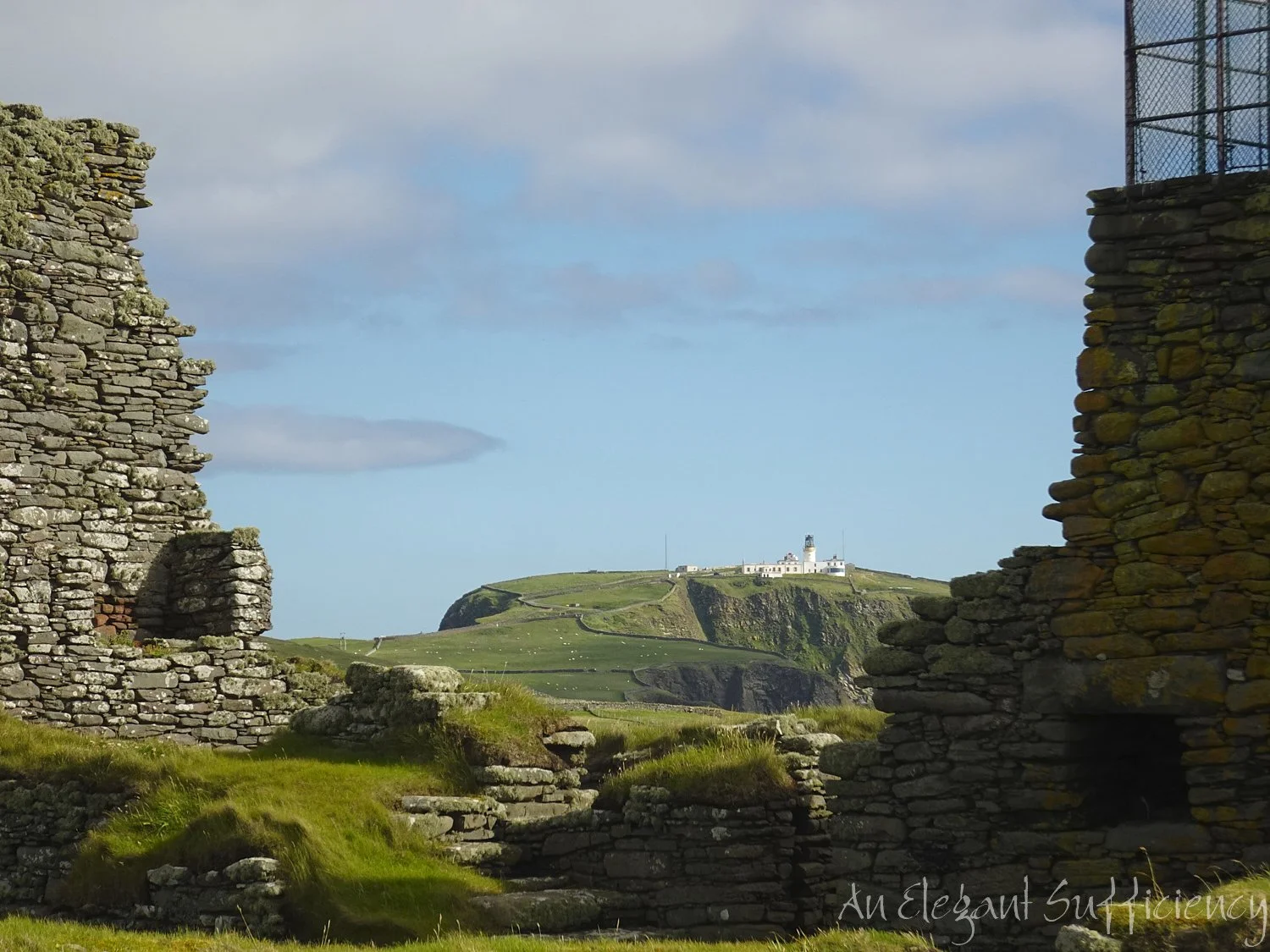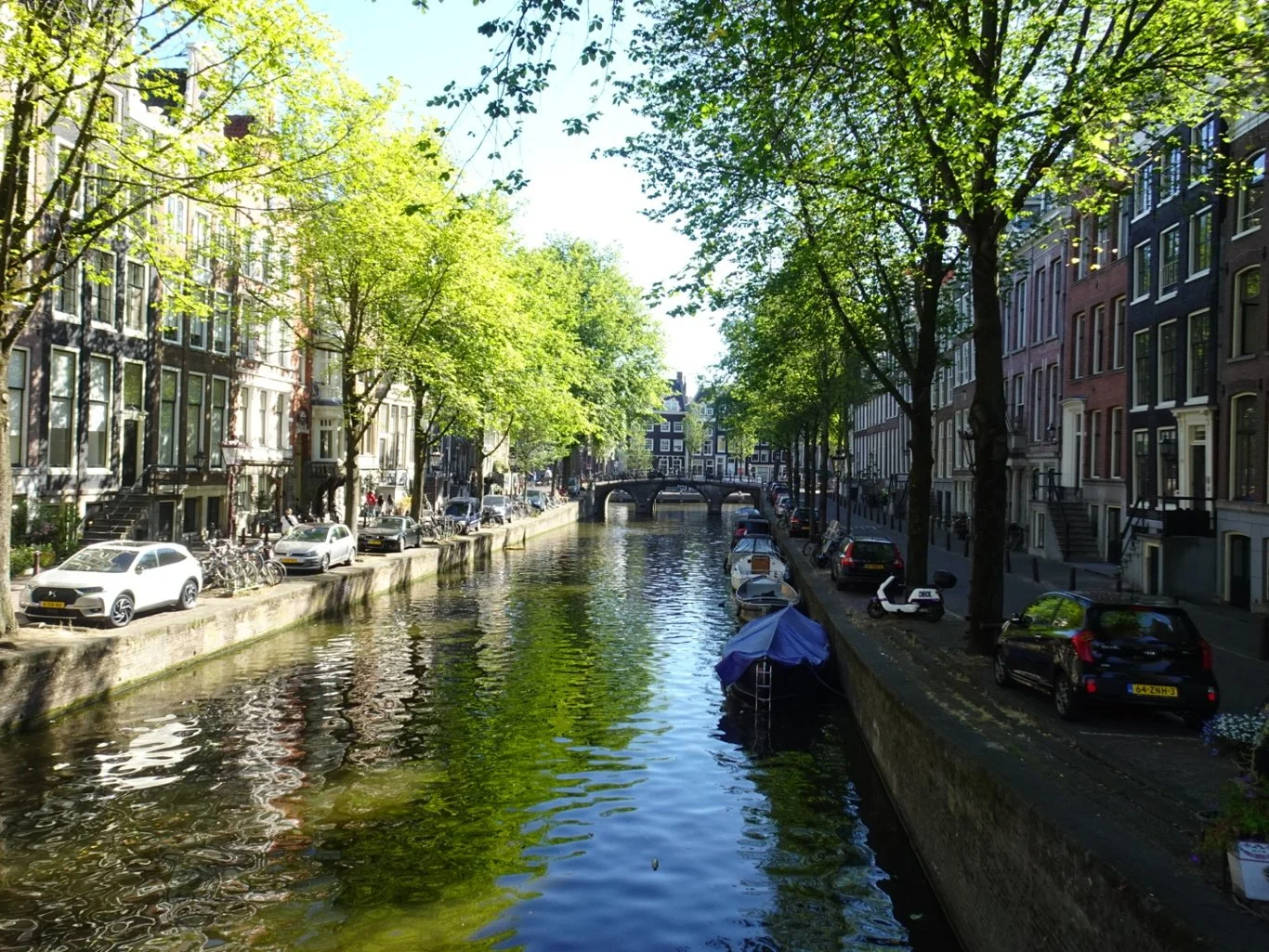Back to Shetland
Well, that would be fun, wouldn’t it?
Today I am sitting at my desk at home with most things back in their proper place and a line of washing out drying in the sunshine. Before I do anything else, I must catch up a bit and indulge myself with a few lovely memories of Lerwick in Shetland, possibly my favourite stop on the whole cruise.
We’d watched as a very distinctive landscape appeared from out of the mist that morning. Out came the phones and google maps, often the easiest means of identifying exactly where we were at times like this. We think it was the southern tip of the isle of Bressay and agreed it was a fine and very distinctive landmark.
We also agreed that the seamen around here must be pretty robust as we watched this small boat rock and roll as it delivered our pilot. He stepped from here and onto Navigator more easily than I’d step off a kerb and the small boat captain put his foot down and zoomed away.
We were coming into Lerwick, or “Lerruck” as the locals referred to it. Now, I don’t normally pay such close attention to the chaps on the quayside, but on this occasion, one of them caught my eye. Can you guess why?
Well, a few weeks ago we watched a programme about a rather remarkable woman. Harriet had raised money for an MRI scanner for the Shetland hospital in Lerwick by doing what she does best - knitting. Her story is here, along with details of the hat she designed and the pattern for it. I had thought that I would look out for the pattern and maybe the yarn whilst I was here - what better souvenir might there be?
As we left the port a bit later, I admired this gentleman’s fine hat (referred to as a bonnet here) and asked if he’d knit it himself. No, his mother had knit it for him, he said, agreeing that it was a rather grand design. We went on to chat about Harriet and her hat and he pointed out a small building, not far from the quayside where, he said, the kit was available to buy. I thanked him and hurried along to join the group before they left without me!
We were just a small group of six today, with John the driver and Drew our guide. From the minute we set off, Drew talked about the islands, the harbour and the deepwater jetties. He told us about the population of Shetland which remains just about the same as years ago, about the small settlements we passed and about the crofts we were passing.
He talked a lot! So much that, though I had a question to ask him about that distinctive cliff face we’d seen from the ship this morning (and which was still visible from the road we were driving along) I couldn’t get a word in edgeways.
He was, however, wearing the most beautifully knit sweater, so I forgave him - almost.
There were some threatening clouds overhead, but somehow, this broody sky seemed to fit with the landscape. Drew and John were chatting about the TV programme Shetland which everyone - except us - seemed to have watched and enjoyed, so as we drove, various locations were pointed out as murder sites and other crime scenes. In fact, said John, it was a wonder that anyone wanted to come here at all, so frequent were the murders!
One distinctive feature of the landscape was the clefts in the peat which had appeared during the very dry summer of 2003. Torrential rain had followed soon afterwards and had resulted in what Drew described as broken land.
For many years, peat was the main source of fuel for the islands, there being no trees growing here. Strangely, until Drew said it, I really hadn’t noticed the lack of trees at all - but now he drew my attention to it, it seemed obvious! The discovery of oil in the North Sea had changed the need to rely on peat as fuel though and much more as well.
Just as we were about to make our first stop, the sun came out. We stood on the grassy slope, overlooking the bay above Rerwick beach and filled our lungs with fresh air. How beautiful was that view?!
A closer look revealed a large number of seals basking in the sunshine, some taking a dip whilst we stood watching.
Time to zoom in a little!
Well, of course, we could have stayed there for hours, simply taking it all in, but we were headed for somewhere even more interesting. By now, Drew and John had settled into a kind of double act - Drew with the serious history and background, John supplying the local knowledge and banter. It was all rather fun.
After a quick comfort stop at the village hall at Dunrossness, which was left open for the specific use of passing Regent customers I believe, we continued along towards Sumburgh airport. We knew that for many, this was a lifeline and had read about the alternative ways of getting on and off the islands in relation to Harriet’s MRI scanner appeal, but I don’t think either of us had realised how close we’d get to it.
Because - please forgive the dreadful photo, snapped through the windscreen - the stop sign just ahead was because the road we were on was about to cross the runway and that little white jet in the previous picture was about to take off. (We had come across this just once before, too) I guess we get to some pretty remote places from time to time!
Just the other side of the runway, on the right in the grounds of the Sumburgh Hotel was our primary destination for the afternoon. We’d read of Jarlshof but had no idea what we were about to see.
We decided to leave the visitor centre until later and the six of us followed Drew along the pathway and listened as he offered an expert background to the site. Meanwhile, John had time for forty winks!
We passed the sign about Sir Walter Scott and I took a photograph, thinking that I’d scan that barcode later. I did and it’s worth a listen.
The coast here, whilst different to that at Rerwick, was stunning and the air so fresh and clear.
But I needed to pay attention, because Drew was telling us about these neolithic houses, built as a community some 4000 years ago and protected by sand blown up during storms.
Actually, had we been here by ourselves, we would have found plenty of information on hand, but I think all six of us agreed that having Drew to ourselves was best of all.
Here we saw the remains of houses, with the brown circular pits the remains of middens or rubbish dumps. There being little agriculture here, the inhabitants lived mostly on shellfish, birds and their eggs. In spite of extensive research no evidence has been found of fishing in pre-Norse times. I find that curious - did they not know about fish or was it that they didn’t have a means of catching them?
There are several examples of grindstones here, used for grinding oats, Drew explained.
Most impressive were the constructions. This was described as a smithy, though Drew believed it to be more of a temporary workshop and forge used by a passing tinker. The stone walls were built into the earth and were remarkably complete given their age.
Whenever I come somewhere like this though, I find myself drifting away from the historical detail from time to time, especially when I see something lovely, such as this stone covered in the most beautiful lichens.
But focus, Gill! We’d moved on to another house complex, with midden and grindstone and some curious vertical stones set on their edge. This structure also had a niche built into the wall. Amazing.
We were walking along a ridge between the seashore and the archaeological site and whilst we marvelled at how this ancient site has survived so long from the storms, I was also marvelling at whatever it was down there on the rocks. Was it decomposing rope? Drew had the answer, bless him - it’s dried kelp. It grows to phenomenal lengths and that it has its own remarkable history. Good grief.
Just where to look next?!
The answer was inside the remains of a broch, built in the Iron Age.
The wind and weather had claimed much of this one, though Drew explained that there were others that were better preserved elsewhere in Shetland and as a result, archaeologists had been able to understand the components here. But all the time he was talking, I struggled to hear because it was time for another plane to take off from the airport!
Never mind, there was always another lichen to snap!
Or two.
To access the next structure, we needed to go through a narrow passageway, beautifully constructed as ever, leading down into the most well sheltered spot.
Known as the Wheelhouse, it offered secure and cosy accommodation around a central hearth and Drew explained that it would also have had a turf roof supported by stones arranged in a radial pattern.
The stone pillars that supported all of that still stand - how remarkable is that?
The roof construction can been seen in places too, though I think Drew said that this particular one was a partial reconstruction.
Turning back towards the visitors centre, we had a fine view of the airport. It was a good drying day in Sumburgh too - I imagine those sheets have to be well pegged to stay in place, though!
We returned through the Medieval farmhouse and back towards the entrance.
As we went, we passed this spiral shaped earthwork back in the neolithic area. Here, I think Drew offered an insight to the archaeologist’s approach when he explained that no-one was really certain of the purpose of this structure. In such a case though, he remarked that a safe bet was that “it was probably used for ritualistic purposes”. He might even have winked.
We had thoughts of taking a look in the on site shop for a book but were shooed out through the gate as the attendant was all packed up ready for home. But no matter, as we climbed on the bus, John asked Drew if he may take a small detour to show us a small secret.
Ooo!
So off we went, curious as to what we were to see. We stopped along a small country lane by a couple of old vehicles and wondered what on earth? “See that red stone”, said John, “it’s the only one of its kind in the area. The only stone of similar type is in Norway - and no-one knows how it got here”.
Ooo again!
Having taken photographs of John’s stone, we were off again, wondering just how such things become the stuff of legend. Later, I asked John if I may share the story of “his stone” with a picture, but promised I wouldn’t identify the location because I really didn’t want to spoil his secret. “Oh of course” he said, “someone might come and offer me millions for it!” So, here’s your opportunity!
Our last stop of the day was at Hoswick, where the ladies had been baking and there was tea ready and waiting for us. I noticed the small craft shop and was reminded of Harriet’s Hat. I’d not done anything about it, but perhaps these ladies might have the pattern? Sadly not, but there was a display of heritage craft items, including a Pirm machine.
Oh heck, time was going on and it looked like I’d have to get my hat pattern online after all.
As we took a look at the view from the car park, I spotted a heap of peat there and went over to look.
Well, actually, it wasn’t the peat that caught my eye but the basket by the side of it. Drew came over and explained that it was a kishie - are there no end of interesting things here?! Behind the kishie was also a tushkar - the tool used for cutting the peat. As I stood admiring the construction of the kishie, John came over and spoke of his mother, who cut peat traditionally and carried it in a kishie on her back, tied securely because as she went, she could use both hands to keep knitting.
Oh my word.
Time to return to the Navigator. What a wonderful afternoon we’d had and the fact that I’d not got my knitting pattern didn’t really matter. I’d learned so much and both - all six - of us, spoke of our wish to return here for longer, to see more of these lovely islands and spend time with such delightful people. John and Drew had been the best company and we considered ourselves to be extraordinarily lucky to have spent time with them here.
As I went through the security gate, the gentleman with the knitted bonnet was still there. “Did you get your knitting pattern?” he asked. I explained that there’d been no time, that we’d been all the way to Jarlshof and had such a wonderful afternoon, it didn’t really matter. “Well, see that lady there - she sells yarn and I’m sure she has the pattern too”.
That’s how I came to meet Sheila, working as a dispatcher that afternoon, but owner of Laxdale Yarn who shared her email in my notebook because there was no time to talk about Harriet’s Hat right there on the quayside. The Captain of the Navigator can’t be expected to wait for me to get my knitting sorted! Needless to say, the yarn and the pattern are on their way to me, along with the yarn and pattern for a lovely cowl too.
What a special day - without doubt, one to remember!









